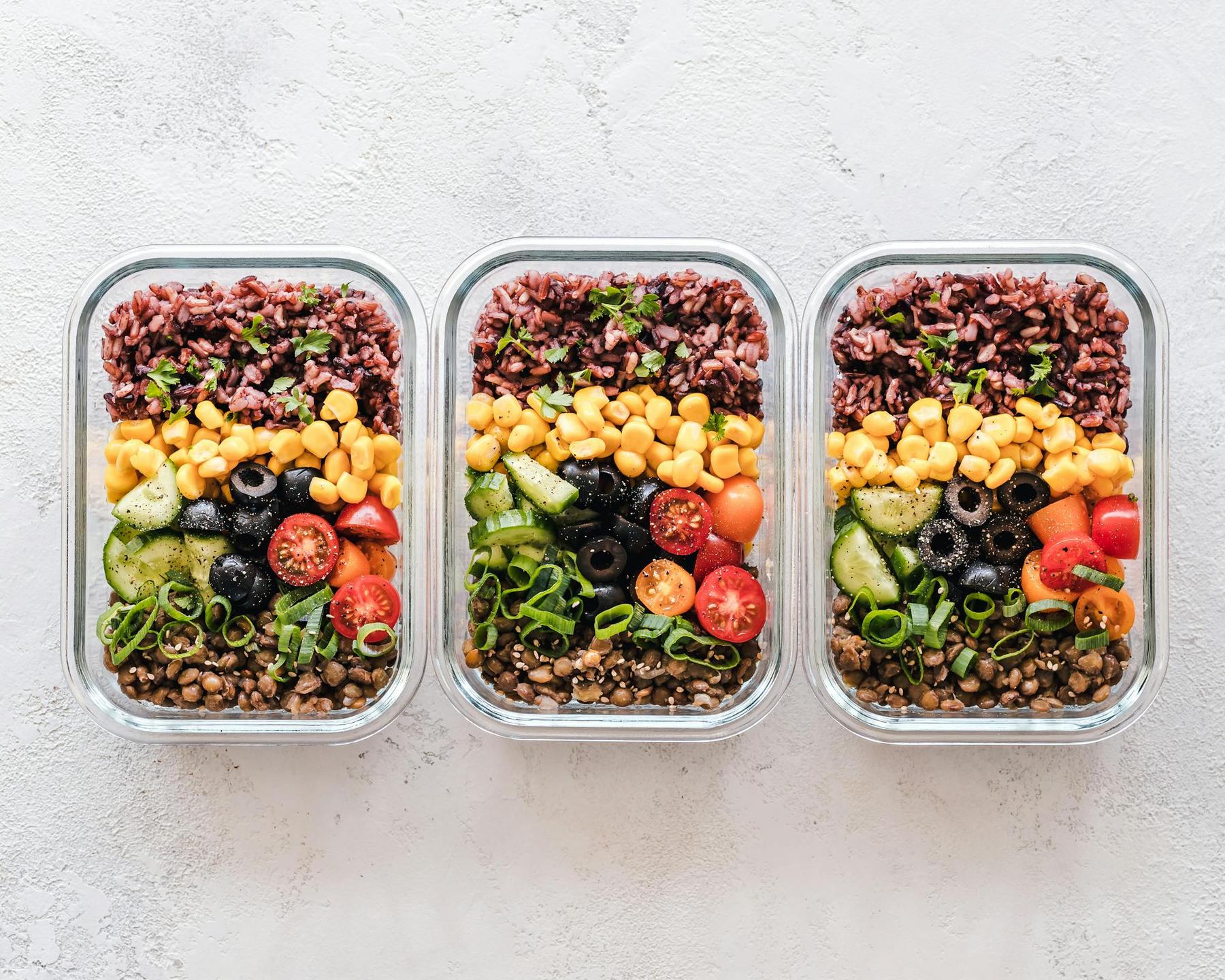In today’s nutrition landscape, we often focus on individual superfoods or nutrients without considering how they interact. Yet, emerging research shows that the strategic combination of different food groups can significantly enhance nutrient absorption, improve metabolic outcomes, and optimize overall health benefits. This scientifically-grounded approach—known as food synergy—transforms ordinary meals into nutritional powerhouses that support everything from weight management to long-term health.
What Is Food Synergy and Why Does It Matter?
Food synergy refers to the enhanced nutritional impact that occurs when certain foods are eaten together rather than separately. This concept is backed by rigorous biochemical research demonstrating how nutrients interact within the digestive system.
The foundational principle is straightforward: certain nutrients work cooperatively, either by enhancing each other’s absorption or by activating metabolic pathways that magnify their effects. For example, studies show that combining vitamin C-rich foods with plant-based iron sources can increase iron absorption by up to 300%. These scientifically-validated interactions help explain why traditional food pairings across cultures have persisted for generations.
The Australian Dietary Guidelines implicitly acknowledge this concept through their recommendation of balanced meals containing multiple food groups. However, understanding specific synergistic relationships allows for more intentional meal planning that maximizes nutritional outcomes beyond simple variety.
How Do Macronutrients Work Together in Your Body?
The strategic combination of proteins, carbohydrates, and fats creates powerful metabolic effects that cannot be achieved by consuming these macronutrients in isolation.
Protein-Carbohydrate Synergy
Research demonstrates that combining 25-30g of high-quality protein with complex carbohydrates reduces post-meal blood glucose spikes by 23-37% compared to carbohydrate-only meals. This occurs through two primary mechanisms:
- Protein triggers the release of cholecystokinin, which slows gastric emptying
- Protein enhances insulin sensitivity in peripheral tissues
This macronutrient partnership is particularly beneficial for those managing weight or blood glucose levels, as it prevents the energy crashes and subsequent hunger that often follow high-carbohydrate meals.
Fat-Mediated Nutrient Absorption
Certain vitamins (A, D, E, and K) are fat-soluble, meaning they require dietary fat for optimal absorption. Clinical studies reveal that monounsaturated fats can increase the bioavailability of carotenoids from vegetables by 2.8-4.7 times. This explains why traditional Mediterranean dishes combine olive oil with tomatoes—creating a synergistic effect where the oil’s fat enhances the absorption of lycopene from the tomatoes.
For Australians following plant-based diets, this interaction is especially relevant. Adding avocado or olive oil to leafy green vegetables dramatically improves the absorption of fat-soluble nutrients that might otherwise be poorly utilized.
Which Food Combinations Enhance Nutrient Absorption?
Several evidence-based food pairings stand out for their ability to enhance nutrient absorption and utilization:
Iron-Vitamin C Combinations
Non-heme iron from plant sources is typically absorbed at rates of only 2-20%. However, when combined with vitamin C-rich foods, absorption rates can increase to 6-65%. This powerful synergy explains traditional pairings like:
- Spinach salad with orange segments
- Lentil soup with a squeeze of lemon
- Baked beans with tomato sauce
This combination is particularly relevant in Australia, where approximately 12% of toddlers experience iron deficiency, according to national health surveys.
Turmeric and Black Pepper
Curcumin, the active compound in turmeric, has limited bioavailability when consumed alone. However, the piperine in black pepper can increase curcumin absorption by an astonishing 2000% by inhibiting liver enzymes that would otherwise break it down. This biochemical partnership validates traditional spice combinations while demonstrating how culinary wisdom often precedes scientific verification.
Complementary Proteins
While most animal proteins contain all essential amino acids, many plant proteins have incomplete profiles. Strategic combinations can create complete protein sources:
| Plant Combination | Key Amino Acids Complemented | Protein Quality Comparison |
|---|---|---|
| Rice + Beans | Lysine + Methionine | Equivalent to animal protein when properly proportioned |
| Hummus + Whole Wheat Bread | Methionine + Lysine | 85-95% of animal protein quality |
| Peanut Butter + Whole Grain Toast | Lysine + Methionine/Cysteine | Provides all essential amino acids |
For the 12% of Australians following vegetarian or plant-based diets, these combinations ensure complete protein intake without requiring animal products.
What Does an Optimally Combined Plate Look Like?
Building on established nutritional frameworks, an evidence-based approach to plate architecture includes:
The Australian Plate Model
Australia’s dietary guidelines provide a systematic foundation through their five-category system:
- Vegetables and Legumes (40% of plate): Emphasize variety across different colours and types
- Proteins (25% of plate): Include both animal and/or plant sources
- Whole Grains (25% of plate): Focus on low-glycemic, unprocessed options
- Healthy Fats (10% of plate): Incorporate sources of omega-3 and monounsaturated fats
- Fruits and Dairy/Alternatives: As accompaniments or between-meal options
Clinical trials show this configuration improves glycated haemoglobin (HbA1c) by 0.8% in prediabetic individuals compared to standard diets—a significant improvement in metabolic health markers.
Strategic Meal Combinations
Beyond simple proportions, specific combinations yield maximum nutritional impact:
- Breakfast: Whole grain porridge with berries and nuts (combining soluble fibre, antioxidants, and healthy fats)
- Lunch: Mixed bean salad with leafy greens, olive oil dressing, and citrus (pairing plant proteins, iron sources, vitamin C, and healthy fats)
- Dinner: Baked salmon with turmeric-seasoned sweet potato and steamed broccoli (combining omega-3 fatty acids, curcumin, carotenoids, and sulforaphane)
These combinations activate multiple synergistic pathways, enhancing nutrient absorption while providing stable energy release.
How Can Food Combining Support Weight Management?
The strategic combination of food groups creates several physiological advantages that can support weight management efforts:
Enhanced Satiety Mechanisms
Meals combining protein, fibre, and healthy fats activate multiple satiety pathways simultaneously:
- Protein stimulates CCK and GLP-1 hormones, signalling fullness
- Fibre expands in the digestive tract, creating physical fullness
- Healthy fats slow gastric emptying, extending satisfaction
When these mechanisms work together, studies show reduced caloric intake at subsequent meals by 12-20% compared to meals missing one or more of these components.
Stabilized Blood Glucose Response
The protein-carbohydrate combination mentioned earlier creates a flatter, more sustained glucose response curve. This metabolic advantage helps prevent the insulin spikes and subsequent crashes that often trigger cravings and overeating. Research demonstrates this effect is particularly pronounced when:
- Protein is consumed before carbohydrates in the same meal
- Vinegar-containing foods are paired with starchy components
- Soluble fibre (from oats, legumes, or fruits) is included with higher-glycemic foods
For individuals managing weight, these combinations create metabolic conditions conducive to appetite regulation and energy balance.
Which Common Food Combination Myths Should You Ignore?
Despite the solid science behind certain food combinations, several persistent myths lack scientific support:
The Fruit Digestion Fallacy
Contrary to popular claims, human digestive physiology efficiently processes fruit alongside other foods. Multiple studies using isotope tracers show complete nutrient absorption from complex meals within normal timeframes. The claim that fruit “rots” in the stomach when eaten with other foods contradicts established digestive physiology.
The scientific reality is that:
- Stomach acid creates an environment hostile to putrefaction
- Different digestive enzymes work simultaneously in different gut regions
- Fibre content, not meal timing, determines gastric emptying rates
Protein-Starch Separation Myth
The notion that proteins and starches should never be eaten together contradicts how human digestion naturally functions. Our digestive system has evolved to process mixed meals through compartmentalized enzyme secretion and pH-regulated digestive phases:
- Pepsin actively digests proteins in the acidic stomach
- Pancreatic amylase breaks down starches in the more alkaline small intestine
- Trypsin continues protein breakdown in the intestines
This compartmentalization allows simultaneous digestion of different macronutrients without competitive inhibition—explaining why mixed meals have been the norm across virtually all culinary traditions.
Practical Food Combining for Maximum Nutrition
Implementing food synergy principles doesn’t require complicated meal plans or exotic ingredients. Simply focus on these evidence-based strategies:
- Pair iron-rich plant foods with vitamin C sources (spinach with capsicum, lentils with tomatoes)
- Combine healthy fats with colourful vegetables (olive oil with tomatoes, avocado with leafy greens)
- Include complementary proteins in plant-based meals (rice with beans, whole grain bread with hummus)
- Add black pepper to turmeric-containing dishes to enhance curcumin absorption
- Balance each plate with protein, complex carbohydrates, and healthy fats for sustained energy
These practical combinations not only enhance nutrient absorption but also create satisfying meals that support overall health and weight management goals.
The science of food synergy represents a powerful convergence between traditional culinary wisdom and modern nutritional biochemistry. By intentionally combining food groups according to these principles, Australians can achieve substantial nutritional benefits without dramatic dietary overhauls.
Which food combinations are best for weight management?
Combining protein, fibre, and healthy fats creates the most effective meals for weight management. Research shows that this combination activates multiple satiety pathways, stabilizes blood glucose levels, and reduces subsequent caloric intake by 12-20%. Practical examples include Greek yoghurt with berries and nuts, lentil soup with olive oil, or a mixed vegetable stir-fry with tofu and sesame oil. These combinations promote fullness while providing sustained energy release.
Can food combinations improve iron absorption from plant-based diets?
Yes, specific food combinations dramatically improve iron absorption from plant sources. Adding vitamin C-rich foods to iron-containing plants increases absorption rates from 2-20% to 6-65%. Practical combinations include adding lemon juice to spinach, pairing beans with tomatoes, or consuming vitamin C-rich fruits alongside iron-fortified breakfast cereals. These strategies are particularly important for vegetarians and vegans who rely exclusively on non-heme iron sources.
Do I need to eat ‘complete proteins’ at every meal?
No, consuming complete proteins at every meal is unnecessary. Research shows that the body maintains an amino acid pool that balances intake throughout the day. However, ensuring adequate protein variety within a 24-hour period remains important. For those following plant-based diets, combining complementary proteins (such as grains with legumes) throughout the day ensures all essential amino acids are available for physiological functions like muscle synthesis and immune response.
How does cooking affect food combinations and nutrient availability?
Cooking methods significantly impact the synergistic potential of food combinations. Certain techniques enhance nutrient availability: light steaming of vegetables preserves water-soluble vitamins while increasing fibre digestibility; cooking tomatoes in olive oil increases lycopene bioavailability by 2-3 times; and fermenting foods improves mineral absorption by reducing antinutrient compounds. Conversely, overcooking can destroy heat-sensitive nutrients, particularly water-soluble vitamins and certain phytochemicals.
Are there food combinations that improve gut health?
Combinations of prebiotic and probiotic foods create powerful synergies for gut health. Prebiotic fibres from foods like garlic, onions, and bananas provide substrate for beneficial bacteria, while fermented foods like yoghurt, kefir, and sauerkraut supply probiotic organisms. Research shows these combinations enhance microbial diversity and improve the production of beneficial short-chain fatty acids. Additionally, polyphenol-rich foods like berries enhance the growth of beneficial Bifidobacteria when combined with prebiotic fibres.



